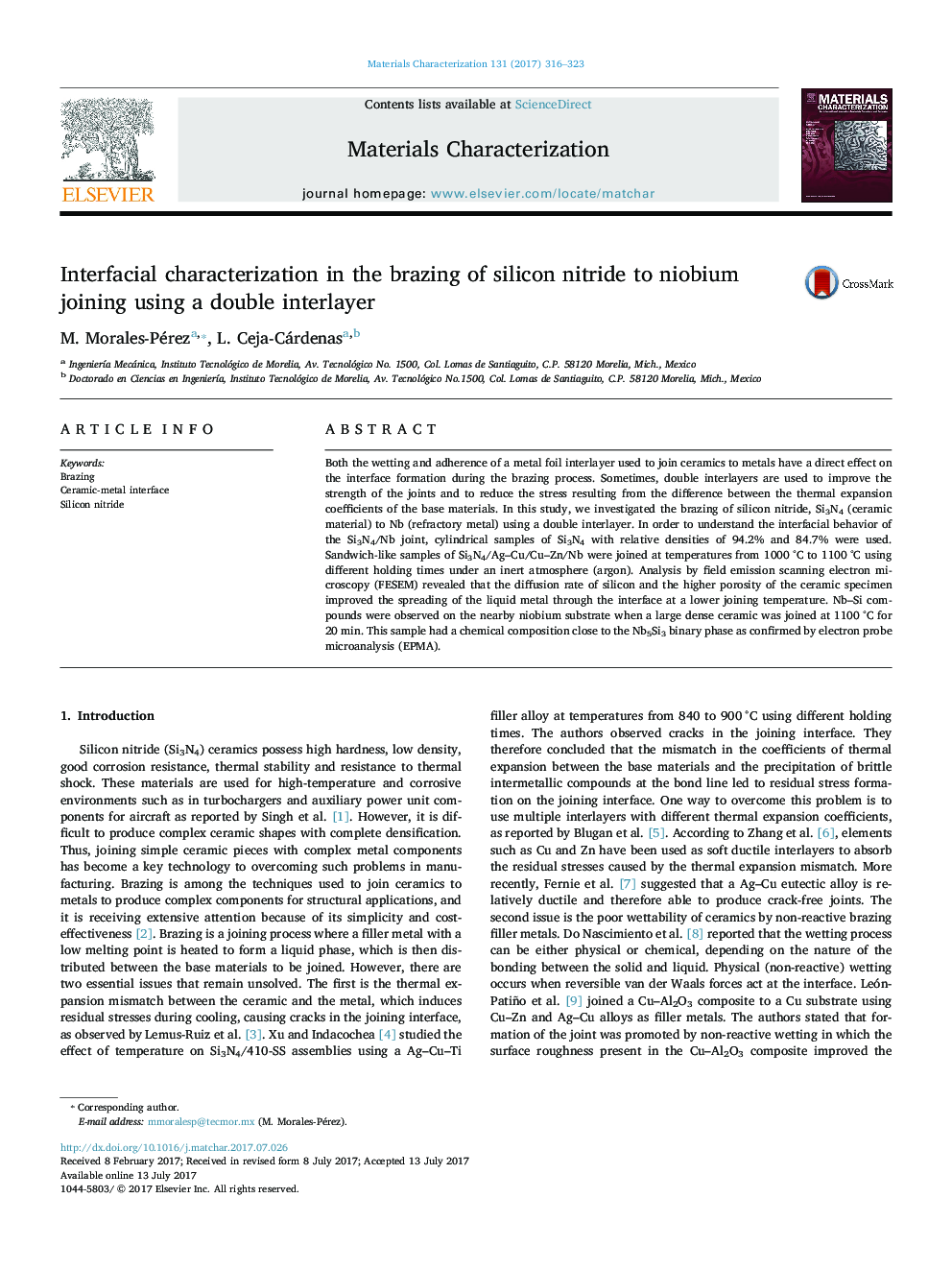| کد مقاله | کد نشریه | سال انتشار | مقاله انگلیسی | نسخه تمام متن |
|---|---|---|---|---|
| 5454598 | 1514356 | 2017 | 8 صفحه PDF | دانلود رایگان |
عنوان انگلیسی مقاله ISI
Interfacial characterization in the brazing of silicon nitride to niobium joining using a double interlayer
ترجمه فارسی عنوان
خصوصیات میان فاز در لحیم کاری نیترید سیلیکون به اتصال نایوبیوم با استفاده از دو لایه دو لایه
دانلود مقاله + سفارش ترجمه
دانلود مقاله ISI انگلیسی
رایگان برای ایرانیان
کلمات کلیدی
ریخته گری، رابط سرامیکی فلز نیترید سیلیکون،
موضوعات مرتبط
مهندسی و علوم پایه
مهندسی مواد
دانش مواد (عمومی)
چکیده انگلیسی
Both the wetting and adherence of a metal foil interlayer used to join ceramics to metals have a direct effect on the interface formation during the brazing process. Sometimes, double interlayers are used to improve the strength of the joints and to reduce the stress resulting from the difference between the thermal expansion coefficients of the base materials. In this study, we investigated the brazing of silicon nitride, Si3N4 (ceramic material) to Nb (refractory metal) using a double interlayer. In order to understand the interfacial behavior of the Si3N4/Nb joint, cylindrical samples of Si3N4 with relative densities of 94.2% and 84.7% were used. Sandwich-like samples of Si3N4/Ag-Cu/Cu-Zn/Nb were joined at temperatures from 1000 °C to 1100 °C using different holding times under an inert atmosphere (argon). Analysis by field emission scanning electron microscopy (FESEM) revealed that the diffusion rate of silicon and the higher porosity of the ceramic specimen improved the spreading of the liquid metal through the interface at a lower joining temperature. Nb-Si compounds were observed on the nearby niobium substrate when a large dense ceramic was joined at 1100 °C for 20 min. This sample had a chemical composition close to the Nb5Si3 binary phase as confirmed by electron probe microanalysis (EPMA).
ناشر
Database: Elsevier - ScienceDirect (ساینس دایرکت)
Journal: Materials Characterization - Volume 131, September 2017, Pages 316-323
Journal: Materials Characterization - Volume 131, September 2017, Pages 316-323
نویسندگان
M. Morales-Pérez, L. Ceja-Cárdenas,
